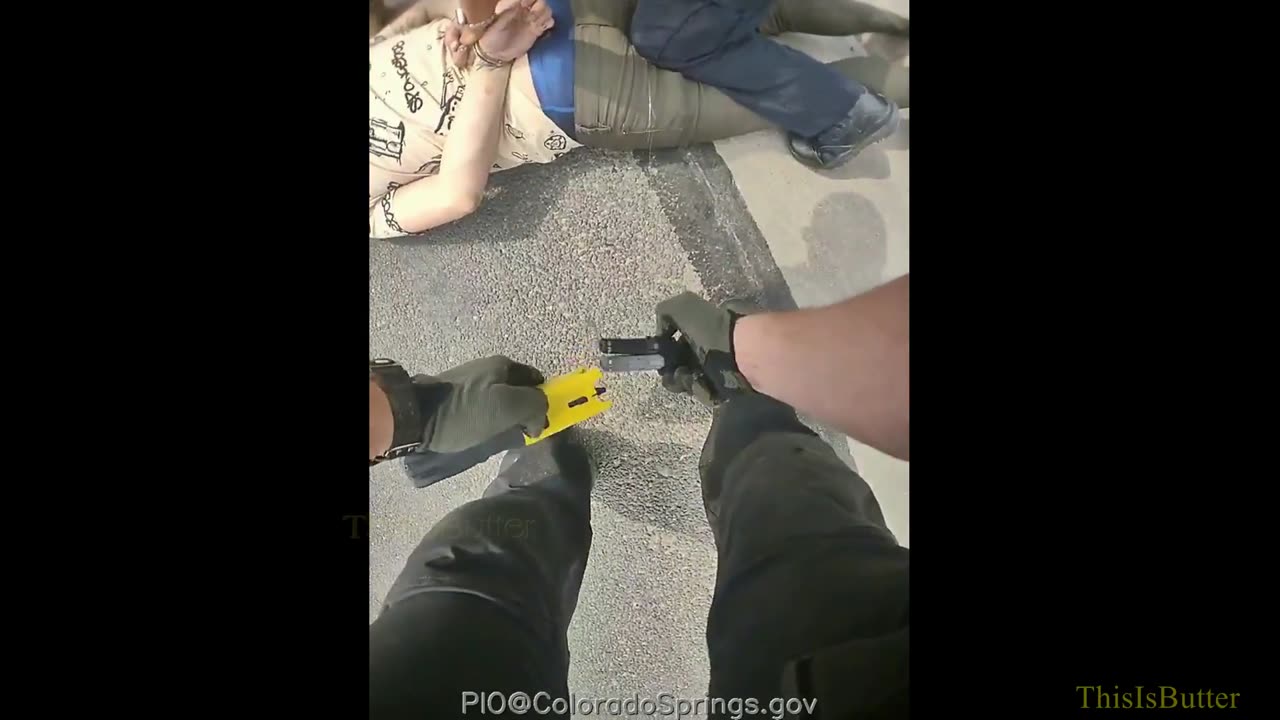Premium Only Content

$100 million lawsuit claims CSPD officer violated policy, paralyzed suspect
A Colorado Springs police officer is facing a $100 million lawsuit from a man who was reportedly shocked with a Taser and paralyzed two years ago.
Attorneys representing Jacob Root claim that police officer Robert Comstock violated the department’s use of force policy when he shocked Root during a foot chase, and that Comstock’s actions resulted in Root being paralyzed from the waist down.
The Colorado Springs Police Department publicly responded on May 10, releasing a statement saying in part that, "after review through the deputy chief, Officer Comstock was exonerated from any policy violation or wrongdoing. CSPD stands by the findings of this internal review.
Comstock remains an employee in good standing with the department, according to the statement.
The department also posted a website showing more bodycam footage from Root's arrest, as well as the internal investigation report that concludes Comstock did not violate the department's use of force policy.
On May 16, 2022, officers working in a multi-agency auto theft task force used a vehicle tracker to find Root driving a stolen car to a Kum & Go gas station on Airport Road, according to police records. When the officers approached Root, he fled. After a brief chase, Comstock shot Root in the back with a Taser, causing him to fall face-first into the street. Injuries from the fall left Root paralyzed.
“This is about choice,” said Harry Daniels, Root's attorney. “Officer Comstock chose to ignore the rules. He chose to disregard the safety procedures. He chose to act recklessly and dangerously and, because of that, Jacob Root is a quadriplegic.”
In body camera footage released by the attorney, an officer can be seen shocking Root as the suspect runs out of the Kum & Go parking lot. Root, who was running down a rocky slope, then pitches forward, face first, into the street.
Comstock is heard on the body camera video requesting medical assistance for Root within seconds of using the Taser.
As he is being handcuffed, Root can be heard saying, “I can’t move. Is that normal?”
“After being tased? Kinda,” a female officer tells him.
Daniels said Comstock violated one tenet of CSPD’s use-of-force policy by deploying the Taser while Root was in an elevated position, and violated another by not warning Root before tasing him.
“You cannot shoot a person in an elevated state. You cannot shoot a person without warning using a Taser," Daniels told Gazette news partner KOAA. “He didn't warn him and shot him in the back and caused him to fall."
CSPD General Order 500 requires officers to give a clear verbal warning before deploying a Taser or any use of force. The department’s standard operating procedure on the use of Conducted Electrical Weapons states that an officer cannot use a Taser on someone “in an elevated position or a location where a fall may cause substantial injury or death.”
The department's internal investigation report notes that Comstock repeatedly ordered Root to stop, albeit threatening the use of a K-9 unit and not the Taser. Additionally, Comstock expressed worry for the safety of Root and pursuing officers if the chase had continued into the roadway, according to the report.
Root is seeking damages from Comstock “in his individual capacity” and not from the department, according to the lawsuit.
“The city has an amazing use-of-force policy,” Daniels told KOAA. “The problem is that the police officer’s not following it. That's the issue.”
-
 1:26:13
1:26:13
Mally_Mouse
4 hours agoLet's Hang!! -- P.O. Box & Chill!
1.54K -
 1:02:37
1:02:37
BonginoReport
4 hours agoKamala Teases Book About Dumpster Fire Campaign - Nightly Scroll w/ Hayley Caronia (Ep.102)
47.3K34 -
 35:05
35:05
Stephen Gardner
4 hours ago🔥Obama will be FORCED to Testify in Trump trial?
11.1K28 -
 9:08
9:08
Tundra Tactical
1 hour agoTundra Tactical Political Memes Review!
4.46K -
 LIVE
LIVE
GloryJean
2 hours agoDuos w/ Spartakus 🔥 LOCK IN for Games w/ PASSION
27 watching -
 LIVE
LIVE
Sgt Wilky Plays
2 hours agoSniper in the bushes
39 watching -
 LIVE
LIVE
Kimberly Guilfoyle
5 hours ago"Burns Bags" at FBI, What's Next? Interview with Former Agent John Nantz | Ep242
549 watching -
 LIVE
LIVE
RamrodJenkins
2 hours agoI'm HYPED for BF6 so let's play some 2042!
33 watching -
 LIVE
LIVE
FusedAegisTV
8 hours agoInto The Belly Of Human Cognition | Persona 5 Royal PART 23
32 watching -
 6:00
6:00
SKAP ATTACK
10 hours ago $0.34 earnedSkinny Luka is Terrifying
6.47K